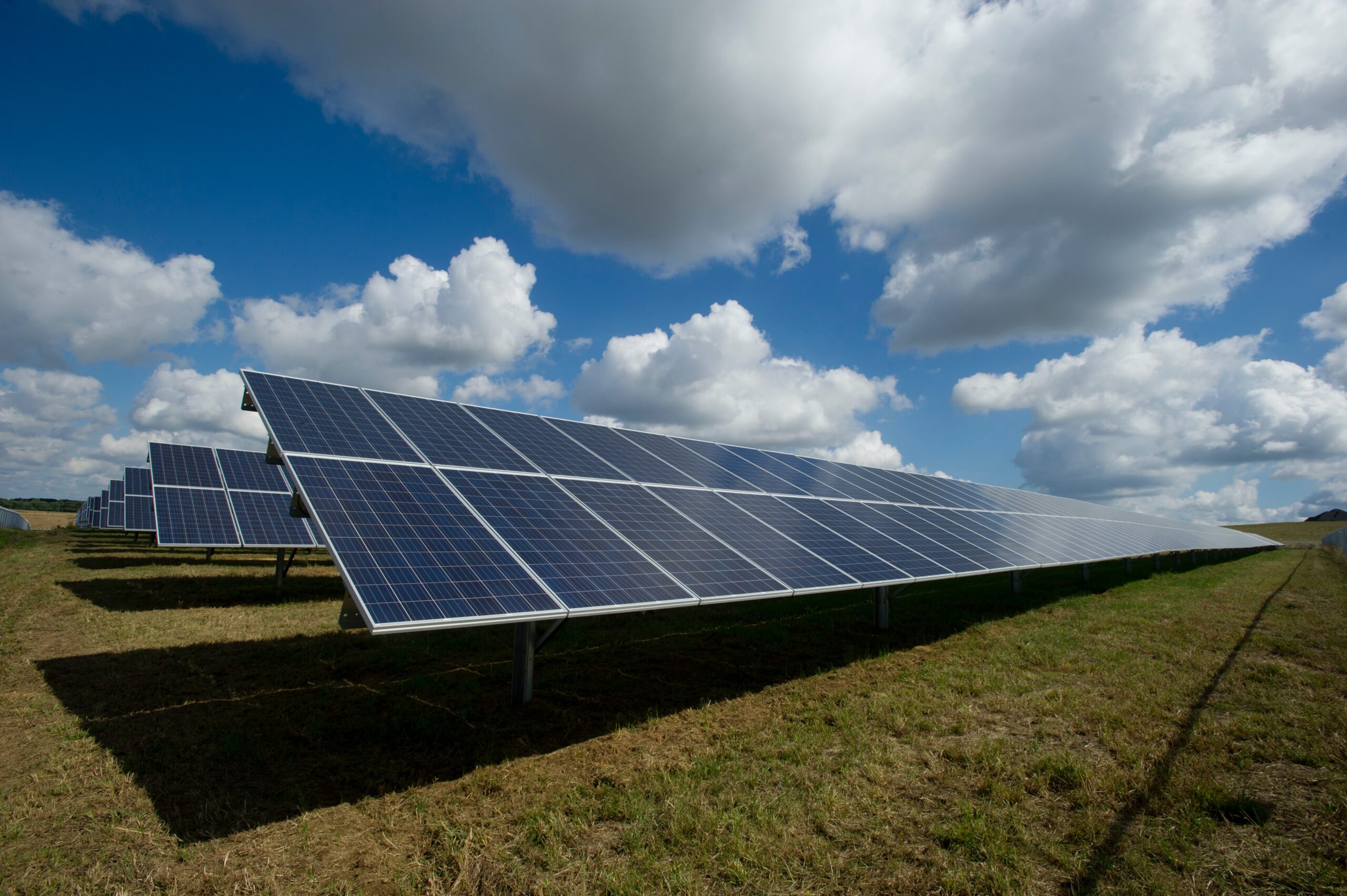The Basics of Solar Energy: A Sustainable Power Source
Discover the basics of solar energy, the ultimate sustainable power source that can change our world. Learn about solar panels, how they work, and their benefits.
Welcome to the incredible world of solar energy, a revolutionary sustainable power source that holds the promise of transforming our planet for the better. As we embark on this enlightening journey together, we will delve into the profound concept of solar energy and explore how it is reshaping our approach to power generation. So, get ready to witness the power of the sun, illuminating our lives and guiding us toward a greener and cleaner future.
What is Solar Energy?
Solar energy is a boundless and renewable source of power derived from the radiant light and heat emitted by the sun. It is a gift from nature that holds the potential to revolutionize the way we generate electricity and meet our energy needs sustainably. Unlike conventional energy sources, solar energy does not emit harmful greenhouse gases, making it an eco-friendly choice that mitigates the impact of climate change.

How Do Solar Panels Work?
At the heart of the solar energy revolution are remarkable devices called solar panels. These panels are equipped with photovoltaic cells that work like magic to convert sunlight into usable electricity. When sunlight strikes the surface of a solar panel, the photovoltaic cells absorb the energy and initiate a mesmerizing process. Electrons within the cells get excited by the sunlight’s energy and break free from their atoms, generating a flow of electricity known as direct current (DC). Through the magic of inversion, this DC electricity is converted into alternating current (AC), which powers our homes, offices, and cities.
Capturing Sunlight: Photovoltaic Cells
The photovoltaic cells within solar panels are marvels of modern engineering. Made from semiconductor materials, such as silicon, these cells have the unique ability to convert sunlight directly into electricity. As sunlight penetrates the cells, it stimulates the electrons, causing them to flow and generate an electric current. The more sunlight that strikes the cells, the greater the electricity they produce. By connecting multiple photovoltaic cells together in a solar panel, we can generate the power needed to cater to our energy demands.

Harnessing Solar Thermal Power
Apart from photovoltaic technology, solar energy can also be harnessed using solar thermal power plants. These plants utilize mirrors to concentrate sunlight onto a receiver, converting it into heat. The generated heat is then used to produce steam, which drives turbines connected to electricity generators. Solar thermal power plants are highly efficient and have the added advantage of storing excess heat for use during periods of limited sunlight.
Advantages of Solar Energy
The adoption of solar energy offers a myriad of advantages that make it an irresistible choice for a sustainable future:
i. Renewable and Abundant: Solar energy comes from an inexhaustible source—the sun. With its abundant supply, solar power can provide our energy needs for generations to come.
ii. Zero Emissions: Solar energy production is clean, emitting no harmful pollutants or greenhouse gases. By relying on solar power, we significantly reduce our carbon footprint and combat climate change.
iii. Economically Viable: While the initial investment in solar panels may seem substantial, the long-term savings are remarkable. Solar panels can drastically reduce electricity bills, leading to significant financial benefits over time.

iv. Low Maintenance and Long Lifespan: Once installed, solar panels require minimal maintenance, with occasional cleaning and check-ups being sufficient. Additionally, solar panels can last for several decades, making them a durable and reliable investment.
v. Energy Independence: Embracing solar energy empowers individuals and communities to take charge of their energy production, reducing reliance on traditional energy suppliers and enhancing energy security.
Environmental Impact of Solar Energy
As the world transitions towards clean and sustainable energy sources, the environmental impact of solar energy is profound and far-reaching:
i. Reduced Greenhouse Gas Emissions: By replacing fossil fuels with solar power, we significantly reduce greenhouse gas emissions, leading to cleaner air and a healthier planet.
ii. Conservation of Natural Resources: Solar energy decreases our reliance on fossil fuels, conserving precious natural resources and protecting delicate ecosystems from the adverse effects of mining and drilling.
iii. Biodiversity Preservation: Compared to traditional energy sources, solar energy has a minimal impact on wildlife habitats, supporting biodiversity conservation efforts.

Solar Energy Storage: Batteries and Beyond
One of the challenges of solar energy is its intermittent nature, as it relies on the availability of sunlight. To ensure a stable power supply, effective energy storage solutions are crucial. Batteries play a central role in storing excess solar energy generated during sunny periods for later use when sunlight is limited. As technology advances, emerging solutions like solar hydro panels, which produce electricity and drinking water from the air, show promise in shaping the future of solar energy storage.

Solar Power in Everyday Life
Solar energy has seamlessly integrated into our daily lives, enhancing our sustainability efforts and contributing to a greener planet:
i. Residential Solar Panels: Many homeowners now embrace solar panels on their rooftops, not only to reduce their carbon footprint but also to enjoy energy cost savings.
For products that will suit both your on-grid and off-grid power solutions, check them out here.
ii. Solar Chargers: Portable solar chargers have become a popular choice for powering our gadgets on the go, making it possible to harness solar energy wherever we are.
iii. Solar-Powered Vehicles: The automotive industry is incorporating solar technology into vehicles, reducing their carbon emissions and promoting eco-friendly transportation.

Overcoming Solar Energy Challenges
While solar energy holds immense promise, several challenges need to be addressed for its widespread adoption:
i. Intermittency and Weather Dependence: Solar power’s reliance on sunlight means that energy generation can vary with weather conditions and time of day.
ii. Energy Storage Efficiency: Efficient and cost-effective energy storage solutions are necessary to address the intermittent nature of solar power and ensure a steady power supply.
iii. Land Use and Environmental Concerns: Large-scale solar projects may require significant land, raising concerns about habitat disruption and land use optimization.
Solar Energy: A Global Perspective
On a global scale, solar energy has transformative potential, shaping societies and economies in various ways:
i. Empowering Developing Nations: Solar energy is a game-changer for developing nations that lack access to traditional power grids. By embracing solar power, these regions can leapfrog outdated and environmentally damaging energy infrastructure, directly harnessing the sun’s energy to meet their electricity needs. This paves the way for enhanced economic growth, improved living conditions, and greater educational opportunities.
ii. Energy Security and Diversification: As the world grapples with concerns about energy security, solar energy presents a viable solution. By diversifying energy sources and incorporating solar power into national energy grids, countries can reduce their dependence on imported fossil fuels and strengthen their energy independence. This strategic move helps mitigate geopolitical risks associated with traditional energy supply chains.
iii. Climate Change Mitigation: With climate change becoming an ever-pressing global issue, transitioning to renewable energy sources like solar power is crucial. The widespread adoption of solar energy significantly reduces greenhouse gas emissions, contributing to global efforts to limit global warming and its devastating consequences. By mitigating climate change, solar energy plays a vital role in preserving the planet for future generations.

Future Prospects of Solar Energy
The future of solar energy is dazzling with possibilities, as ongoing research and innovation continue to unlock new potentials:
i. Increased Efficiency: Researchers and scientists are continually striving to improve the efficiency of solar panels. Advancements in materials and manufacturing processes hold the promise of producing more electricity from a given amount of sunlight, making solar energy even more cost-effective and accessible.
ii. Building-Integrated Solar Technology: The integration of solar technology into building structures is gaining momentum. Solar windows, roof tiles, and facades that harness sunlight while serving their architectural purpose are emerging as aesthetically pleasing and practical energy solutions.
iii. Solar Farms and Microgrids: Large-scale solar farms are becoming prevalent, efficiently harvesting vast amounts of solar energy to power entire communities. Moreover, the concept of microgrids—localized power grids that operate independently of the main electrical grid—is gaining traction, ensuring energy resilience and reliability.
iv. Energy Sharing and Peer-to-Peer Trading: The rise of blockchain technology enables energy-sharing platforms where individuals and businesses can exchange surplus solar power directly. This peer-to-peer trading fosters a decentralized energy market, empowering consumers and promoting sustainable energy practices.
Solar Energy Myths Debunked
Let’s dispel some common misconceptions surrounding solar energy:
Myth 1: Solar Panels Don’t Work on Cloudy Days.
Fact: While solar panels are indeed less efficient in overcast conditions, they can still generate electricity. The diffuse sunlight on cloudy days can power solar panels, though at a reduced capacity compared to sunny days.
Myth 2: Solar Energy is Expensive and Inaccessible.
Fact: Solar energy has become increasingly affordable over the years. Advances in technology, government incentives, and various financing options have made solar panels accessible to a broader range of consumers.
Myth 3: Solar Power is Only for Warm Climates.
Fact: Solar panels can generate electricity in various climates, not just warm regions. They rely on sunlight rather than heat, making them effective even in colder areas.
Myth 4: Solar Energy is Harmful to the Environment.
Fact: On the contrary, solar energy is one of the cleanest and most environmentally friendly energy sources available. It produces no emissions during operation and contributes positively to environmental preservation.
Myth 5: Solar Panels Require Constant Maintenance.
Fact: Solar panels are low-maintenance devices. While occasional cleaning and inspections are beneficial, they generally require minimal upkeep and can last for several decades.
Conclusion
As we draw the curtain on this illuminating journey through the basics of solar energy, we are left with a sense of awe and inspiration. Solar energy represents a beacon of hope, guiding humanity toward a sustainable and environmentally conscious future. From harnessing the sun’s rays through photovoltaic cells to embracing innovative solar storage solutions, we have witnessed how solar energy is reshaping the way we generate power and fostering a greener planet.
By choosing solar energy, we can collectively reduce our carbon footprint, mitigate climate change, and secure a brighter tomorrow for generations to come. It is up to us to embrace this transformative power source, advocate for clean energy policies, and empower societies worldwide to tap into the boundless energy of the sun. Let us take this knowledge and use it as a catalyst for positive change, paving the way for a cleaner, healthier, and more sustainable world. The future shines bright with solar energy—let’s embrace it and forge a path toward a greener and brighter future together!
You can contact Trippleact Technical Consult for all your Solar Installation concerns.

Nice and educating write up.
Thanks